 |
National day Celebration at "Grigoris Afxentiou
Momument" |
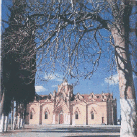 |
Late 19th century "Panayia's Church",
covered in a thick layer of Gothic decoration copied from the great medieval cathedrals of
Famagusta and Nicosia. |
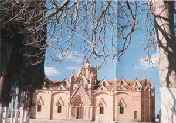 |
Another picture of the village's Church. |
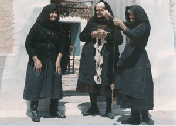 |
Λυσιώτισσες. (Lysiotisses) Old women of Lysi, wearing the
village's traditional costumes. The oldest one (on the left) wears boots and has her hair
covered. The most modern one (the one in the middle) does not cover her hair completely
and wears shoes. |
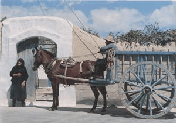 |
All the houses in Lysi had their outside walls painted white. The
carriage in the picture was the common transportation vehicle in agricultural areas of
Cyprus until the independence in 1960. |
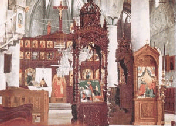 |
A picture taken inside the Panayia's Church |
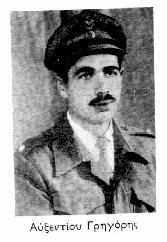 |
Grigoris Afxentiou (1928-1957), fighter during the Cypriot struggle
for union with Greece. He was the deputy leader of the military wing of
E.O.K.A.(Ethiniki Organosis Kypriakou Agonos = National Organization of Cypriot Struggle).
His pseudonym during the struggle was Zedhros. He was born in 1928 in Lysi and he
studied in the 'School of Reserve Officers. In Spring 1955, he participated in the
bombing attack against the British-controlled Broadcasting Corporation in Lefkosia
(Nicosia). The British authorities offered a bounty of 5,000 pounds for his
arrest. On March 3rd, 1957 British soldiers burned him alive in the cave he was
hiding, on a mountain side nearby the Machaeras monastery. Before their decision to
burn him alive, he heroically resisted the repetitive attacks against his shelter for
about ten hours. |
| Γρηγόρης Αυξεντίου (1928 - 1957),
αγωνιστής του ενωτικού αγώνα της Κύπρου με την
Ελλάδα. Διατέλεσε και υπαρχηγός της Ε.Ο.Κ.Α.
(Εθνική Οργάνωση Κυπριακού Αγώνος), με το
ψευδώνυμο Ζήδρος. Γεννήθηκε το 1928 στη Λύση και
σπούδασε στη Σχολή Εφέδρων Αξιωματικών. Την
άνοιξη του 1955 ανατίναξε μαζί με άλλους τον
αγγλικό ραδιοφωνικό σταθμό Λευκωσίας. Οι Άγγλοι
τον επικήρυξαν για 5.000 λίρες. Στις 3 Μαρτίου 1957
Άγγλοι στρατιώτες τον έκαψαν ζωντανό μέσα σε μια
σπηλιά, κοντά στο μοναστήρι Μαχαιρά, αφού επί
δέκα ώρες αντιστάθηκε ηρωικά μόνος του |